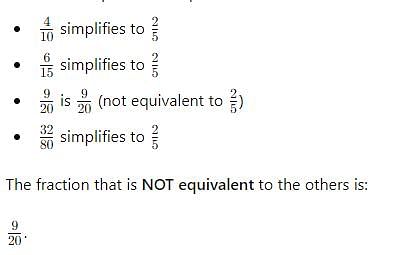Olympiad Test: Decimals And Fractions - 3 - Class 5 MCQ
20 Questions MCQ Test Math Olympiad for Class 5 - Olympiad Test: Decimals And Fractions - 3
For the fraction of pizza shown in the diagram, what is the numerator?


| 1 Crore+ students have signed up on EduRev. Have you? Download the App |
What fraction has denominator 12 and equivalent to 2/3.
Which one of the following fractions is NOT equivalent to all the others?
Which of the following can be written in the box? 
Which of the following can be written in the box 
The equivalent fraction of 3/5 with denominator 20 is
The equivalent fraction of 3/5 with numerator 9 is
Express 4/9 as a decimal correct to 3 decimal places.
The next equivalent fraction of the given fraction  is
is
Which of the following pair of fractions are equivalent?
Which of the following fraction is a like fraction of 1/15?
Express 0.85 as a fraction in its lowest terms.
Which of the following fraction is a unlike fraction of 3/7?
Which of the following is a larger fraction?
Which one of the following fractions is the largest?
Which of the following is a smaller fraction?
Which of the following is a greater fraction?
|
32 videos|57 docs|45 tests
|
|
32 videos|57 docs|45 tests
|




















